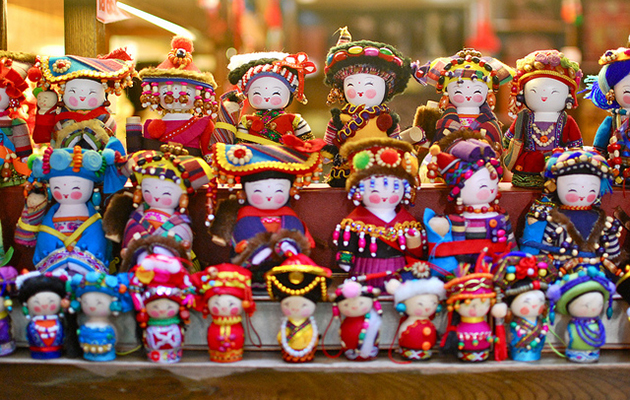Surely there’s a better way of holding on to cherished memories than through the medium of tat, writes Bryony Hancock
During my schooldays, I loved Septembers. After six weeks apart and laden with tales of family holidays, my friends and I gaily greeted each other with woven friendship bracelets, stripy bars of rock and plastic dolphins proclaiming ‘I Love Ibiza’ on their dorsal fins. What greater joy could befall a seven-year-old?
Now, as the flurries of my adolescence cower in the wake of cynical adulthood, I’ve come to despise these trinkets. As a native of Shakespeare’s Stratford-upon-Avon, I have long abhorred tourists. My recent move to London only worsened this misanthropy. So, why do I feel obliged to become one as soon as I cross the Channel? Some researchers wax lyrical about how spending money on physical objects releases serotonin. Gifts can be a measure of love or compassion. But do they have to be kitsch?
This term derives from the German, ‘kitschen’, meaning, ‘to put together sloppily’. If this means realising en route to Mykonos airport that you’ve forgotten to buy your mother-in-law a bottle of Ouzo, and frantically scouring a local market for fear of being struck off the inheritance, then it’s an accurate etymology. However, the word has since transformed into an expression of over-materiality.
As a population, we have too much stuff. During the UK’s recent royal nuptials, an estimated £30 million was spent on memorabilia. This does not surprise me: on a school study trip to Venice, the primary mission set by my tutor was not one of highbrow cultural experiences or creative reconnaissance, but a challenge to find the cheapest, tackiest piece of tourist tat possible. For what cause? Hilarity and cute abundance don’t quite cut it, I’m afraid.
Such dependence on novelty is driven by an absence of craftsmanship and functionality, not to mention authenticity. Religious replicas are the bread and butter of tourism: buy this genuine Buddhist monk’s robe and may eternal enlightenment befall your very shoulders. Alas, I think not.
Please don’t peg me as a Scrooge who reels at all holiday relics; a checked wool blanket from Scotland or some handmade Spanish crockery are tangible mementos that serve a function and represent a culture’s craft. And there is an argument for kitsch. In Susan Stewart’s exploratory essay On Longing: Narratives of the Miniature, the Gigantic, the Souvenir, the Collection (1984) she asserts that the kitsch object symbolises irony in the speed of meta-fashion. It is an expendable commodity that embodies fun. Yet these tourist dust-traps draw the mind more to excessive consumerism than comical expression.
On a recent trip to Australia I almost bought my family a cork hat, eucalyptus candle and ‘genuine’ aboriginal print. As I pondered whether my bursting suitcase could take any more, I decided to make a stand. My seven-year-old self would wince, but trinkets, knickknacks and bagatelles are best left in the airport.



















